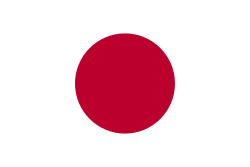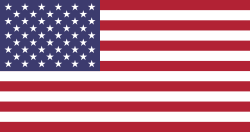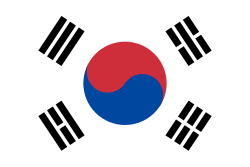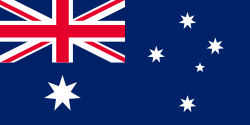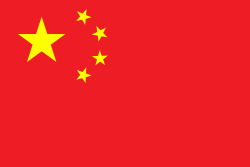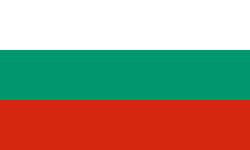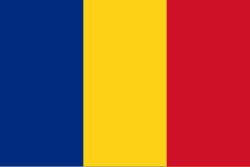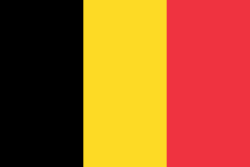Eiskunstlauf-Weltmeisterschaften 1994
| Eiskunstlauf-Weltmeisterschaften 1994 | |
|---|---|
| 84. Austragung | |
| Typ: | ISU-Meisterschaften |
| Datum: | 20.–27. März 1994 |
| Austragungsort: | Makuhari Messe, Chiba, Japan |
| Goldmedaillengewinner | |
| Herren: | |
| Damen: | |
| Paare: | Wadim Naumow |
| Eistanz: | Jewgeni Platow |
| Eiskunstlauf-Weltmeisterschaften | |
| 1993 ◄ 1994 ► 1995 | |
Die 94. Eiskunstlauf-Weltmeisterschaften fanden vom 20. bis 27. März 1994 in Chiba, Japan, statt. Austragungsort war die Makuhari Messe im Stadtbezirk Mihama.
Ergebnisse
Herren
Damen
- Z = Zurückgezogen
Paare
Eistanz
| Platz | Sportler | Land |
|---|---|---|
| 1 | Oxana Grischtschuk / Jewgeni Platow | |
| 2 | Sophie Moniotte / Pascal Lavanchy | |
| 3 | Susanna Rahkamo / Petri Kokko | |
| 4 | Irina Romanova / Igor Yaroshenko | |
| 5 | Tatjana Nawka / Samwel Gesaljan | |
| 6 | Shae-Lynn Bourne / Victor Kraatz | |
| 7 | Jennifer Goolsbee / Hendryk Schamberger | |
| 8 | Kateřina Mrázová / Martin Šimeček | |
| 9 | Margarita Drobiazko / Povilas Vanagas | |
| 10 | Marina Anissina / Gwendal Peizerat | |
| 11 | Aliki Stergjadu / Juri Razguljajew | |
| 12 | Elizabeth Punsalan / Jerod Swallow | |
| 13 | Irina Lobatschowa / Ilja Awerbuch | |
| 14 | Elizaveta Stekolnikova / Dmitri Kazarlyga | |
| 15 | Diane Gerencser / Alexander Stanislavov | |
| 16 | Marika Humphreys / Justin Lanning | |
| 17 | Barbara Fusar-Poli / Alberto Reani | |
| 18 | Elena Hruschyna / Ruslan Hontscharow |
Medaillenspiegel
| Platz | Land | Gesamt | |||
|---|---|---|---|---|---|
| 1 | 2 | – | 1 | 3 | |
| 2 | 1 | 1 | – | 2 | |
| 3 | 1 | – | – | 1 | |
| 4 | – | 3 | – | 3 | |
| 5 | – | – | 1 | 1 | |
| – | – | 1 | 1 | ||
| – | – | 1 | 1 |
Weblinks
- World figure skating championships 1990–1999 (pairs). Skatabase, archiviert vom am 13. Februar 2012; abgerufen am 29. Mai 2018 (englisch).
- World figure skating championships 1990–1999 (ladies). Skatabase, archiviert vom am 16. Juli 2011; abgerufen am 29. Mai 2018 (englisch).
- World figure skating championships 1990–1999 (dance). Skatabase, archiviert vom am 16. Juli 2011; abgerufen am 29. Mai 2018 (englisch).
- World figure skating championships 1990–1999 (men). Skatabase, archiviert vom am 16. Juli 2011; abgerufen am 29. Mai 2018 (englisch).
Auf dieser Seite verwendete Medien
Flag of Canada introduced in 1965, using Pantone colours. This design replaced the Canadian Red Ensign design.
Flagge des Vereinigten Königreichs in der Proportion 3:5, ausschließlich an Land verwendet. Auf See beträgt das richtige Verhältnis 1:2.
Flagge des Vereinigten Königreichs in der Proportion 3:5, ausschließlich an Land verwendet. Auf See beträgt das richtige Verhältnis 1:2.
Chinese Taipei Olympic Flag. According to the official website of Chinese Taipei Olympic Committee, Blue Sky(circle) & White Sun(triangles) above the Olympic rings is neither the National Emblem of the Republic of China, nor the Party Emblem of Kuomintang (KMT), but a design in between, where the triangles do not extend to the edge of the blue circle, as registered at International Olympic Committee in 1981 and digitally rendered in 2013. Besides, the blue outline of the five-petaled plum blossom is broader than the red one. Moreover, the CMYK code of the blue one and the Blue Sky & White Sun is "C100-M100-Y0-K0", and different from the Olympic rings (C100-M25-Y0-K0). Note that it's the only version recognized by IOC.
Flag of Australia, when congruence with this colour chart is required (i.e. when a "less bright" version is needed).
See Flag of Australia.svg for main file information.Flag of South Africa, used between 1928 and 1982. It is identical to the 1982 to 1994 version except that the shade of blue is darker. It is also known as the "Oranje-Blanje-Blou".
Das Bild dieser Flagge lässt sich leicht mit einem Rahmen versehen
Die quadratische Nationalfahne der Schweiz, in transparentem rechteckigem (2:3) Feld.
Flag of Georgia used from 1990 to 2004, with slightly different proportions than the 1918 to 1921 flag.
Autor/Urheber:
- Gold_medal_world_centered.svg by Maix
- derivative work: Mboro (talk)
A gold medal with a globe icon
Flag of Belarus in 1991—1995
Autor/Urheber:
- Silver_medal_world_centered.svg by Maix
- derivative work: Mboro (talk)
A silver medal with a globe icon
Flag of Hong Kong (1959–97). Granted on 21 January 1959, used until 30 June 1997
Autor/Urheber:
- Bronze_medal_world_centered.svg by Maix
- derivative work: Mboro (talk)
A bronze medal with a globe icon

